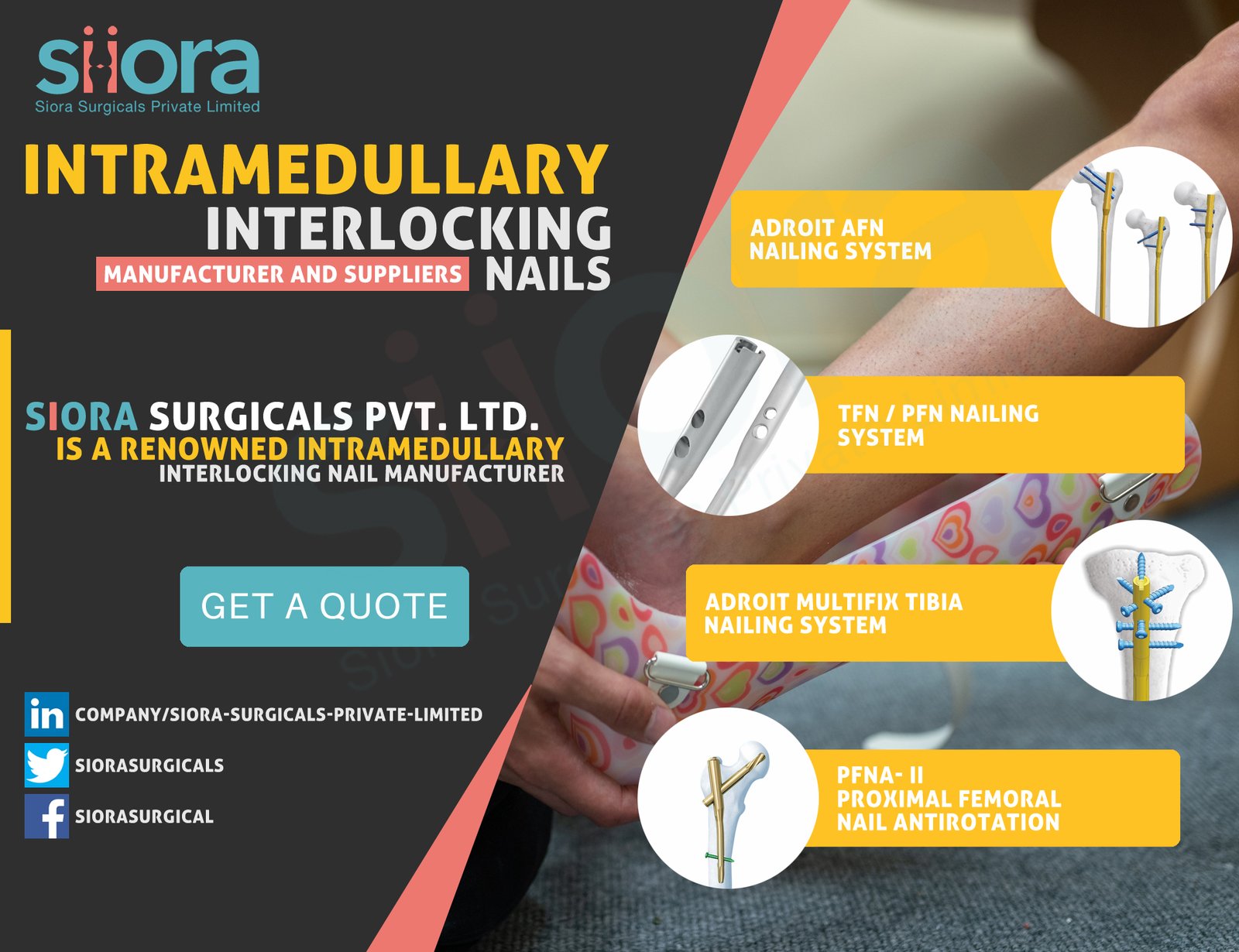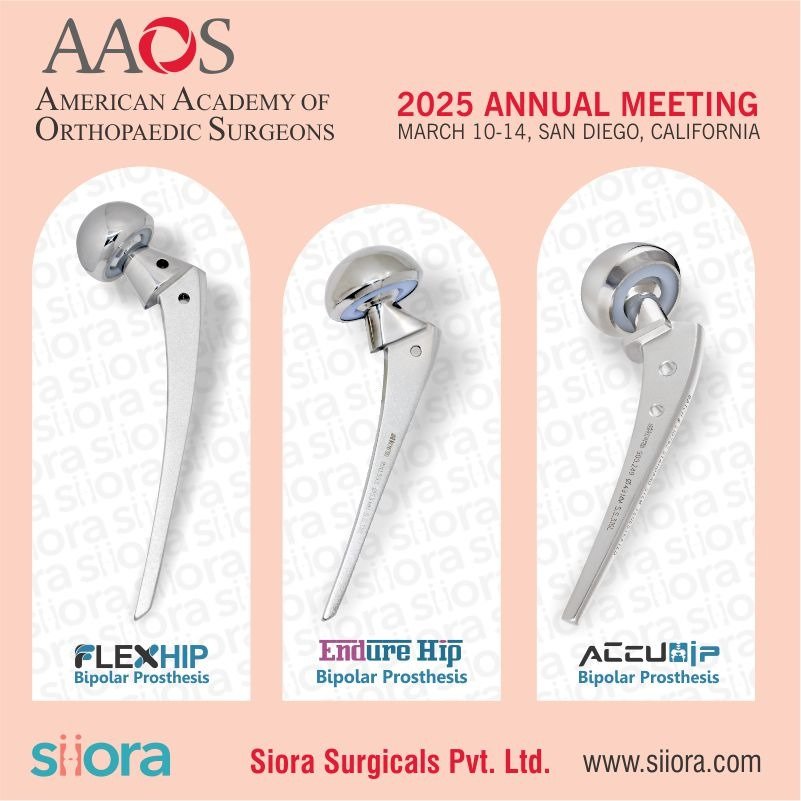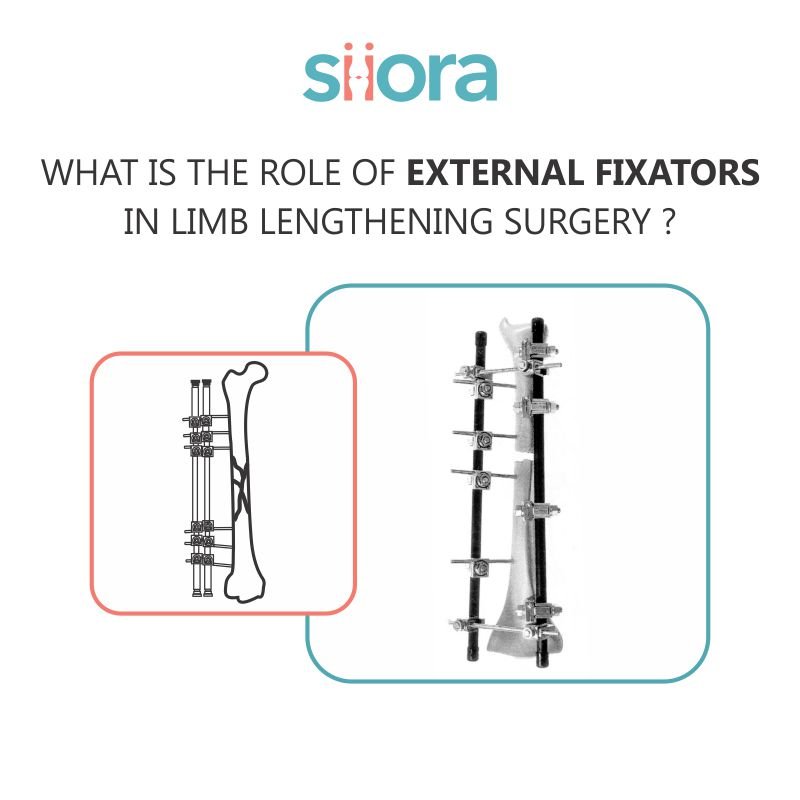IM Nails or intramedullary nail are Orthopedic Implants used to align and stabilize fractures. Intramedullary rods are inserted into the bone marrow canal in the center of the long bones of the extremities. They may be used in the tibia (shin bone) and the femur (thigh bone), for example. They are also called intramedullary nails. These nails are provided by the orthopedic implant suppliers.
One of the significant benefits of IM rods over other methods of fracture fixation is that IM rods share the load with the bone, rather than totally supporting the bone. Due to this, patients can use extremity more quickly.
IM rods can’t be used for all fractures. Because, there are mostly associated complaints of pain and other symptoms at the site where the IM rods are inserted. For this reason, a second operation may be required to remove the IM device if you have painful symptoms. Otherwise, the IM rod is intended to stay inside your bone forever.
Bone Healing and Intramedullary Rods:
It is important to note that these types of orthopedic implants do not really speed bone healing and they do not take the place of bone healing. Any metal implant used to stabilize a fracture is intended to hold the fracture in proper alignment while the normal healing process takes place.
While bone healing may not speed up, some IM rods are intended to have enough strength to carry the body weight, and that is why people can often place weight on the extremity sooner than if you had to wait for complete bone healing. However, this should be done strictly as per the manufacturer’s instructions for use or treating the surgeon’s advice.
Uses of Intramedullary Rods
Femur Fracture:- A femoral shaft fracture (broken thigh bone) is usually treated with intramedullary nailing. Generally, the rod is made of titanium and they come in different diameters and lengths. This is to fit patients of different heights and ages. A small incision is made at either the knee or the hip and the rod is inserted into the marrow canal. Screws used to hold it in place at each end are often termed Locking Bolts.
Tibia Fracture:- Shinbone fractures are also usually treated with intramedullary nailing. It is inserted down the marrow canal of the tibia from the knee, crossing the fracture area for full-length fixation. Screws are placed on both ends to keep it in place during healing. The rod makes sure that position will be maintained better than just using an external fixation or cast. However, this is generally avoided in children because the rod would cross the bone’s growth plates and could influence the length of the leg.
Intramedullary rods may also be used in cases of metastatic bone disease in cancer to fix and support a bone after removal of the tumor. This may be done for bones that have fracture risk.
In the genetic disorder osteogenesis imperfecta or brittle disease of bone, rodding surgery may be used to prevent fractures as well as progressive deformity of the long bones. Telescoping rods may be used for growing children. They extend as the bone grows.








